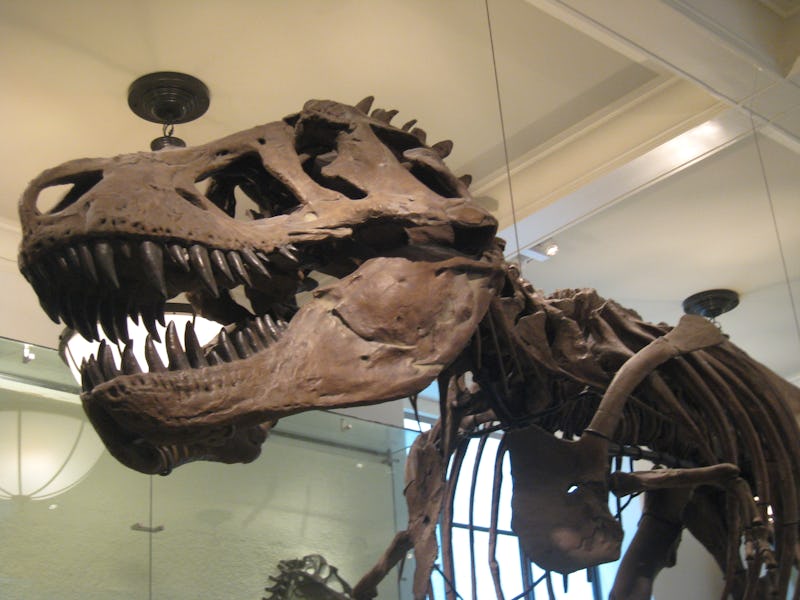The Tyrannosaurus Rex Had Lips and It Probably Didn't Roar
Evidence and reason prove that our idea of the dinosaur king is more fantasy than fact.

Ah, the Tyrannosaurs rex, the tyrant lizard king. That great beast was certainly a formidable predator of the Cretaceous (no, not Jurassic) period. But while science has moved on from the idea of the T. rex as a scaly reptilian monster, for a lot of people our imagination of it is firmly stuck in Jurassic Park.
Here’s what we now know: The Tyrannosaurs rex looked more like a giant bird than a lizard. It was covered in feathers, like many in the theropod family, of which all living species of bird are a part. Today’s paleoart has caught up with this idea, and no self-respecting dinosaur aficionado would draw a T. rex without at least some feathery covering. But there’s another T. rex trope that still needs busting: Those gnarly, gnashing teeth.
See, there’s no good evidence to support the idea that you could see a Tyrannosaur’s teeth if her mouth was closed. As Robert Reisz, a vertebrate paleontologist with the University of Toronto, points out, nearly all living animals with enamel teeth have lips to cover them up, so they stay moist and protected within the mouth. The only exception is the crocodile, which lives in a naturally moist environment.
Feathered tyrannosaurs are in fashion, but the old toothy trope is a stubborn one. Illustration by Durbed on DeviantArt.
So the evidence very heavily points to a good set of lips covering up the T. rex’s most deadly weapon. And yet it’s rare to see a T. rex reconstruction with hidden teeth. There’s a few reasons why paleoart might be so stubborn on this point. For one, the large carnivorous dinosaurs have been drawn with bared teeth for so long, and it’s easy to copy what’s come before. For another, a T. rex with a mouth full of teeth just looks more ferocious, more emotionally compelling. For a third, all dinosaur reconstructions are based off of skeletons, of which the teeth are the most striking feature — it almost seems a shame to cover them up.
“I think the reality of what we know about dinosaurs is that they looked a lot less monstrous, and possibly, somewhat fancier and sillier,” said paleoartist John Conway in a recent conversation with Inverse. “A lot of meat-eating dinosaurs, you might not have even seen their teeth, most of the time. Even with their mouths open, maybe not.”
A Komodo dragon skull, with some fierce looking teeth.
The Komodo dragon, for example, has a nasty set of serrated one-inch teeth, which look pretty fearsome if you’re looking at a skull, but in the living animal you can’t even see, even with a wide open mouth.
The Komodo dragon's teeth are well hidden within its fleshy lips and gums.
As for the T. rex, it was probably not running around doing all of that sprinting and squatting and growling that you see in CGI animations, said Conway. “A Tyrannosaurus, if you came across it in the real world, would strike you as a pretty athletic sort of animal, but its motion would be very, very stereotyped and quite smooth. Much like an elephant — you very rarely see them make jarring motions.”
If it could run, it was probably just barely a run, but you still wouldn’t want to get in its way. “It’s a huge animal, and even a fast walk is really quick,” he said. “Also, all that roaring stuff — I don’t buy any of it. Predators don’t just roar at their prey before they bite them.”